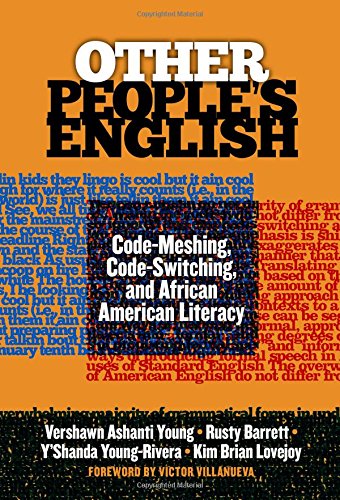This book presents an empirically grounded argument for a new approach of teaching writing to diverse students in the English language arts classroom. Responding to advocates of the “code-switching” approach, four uniquely qualified authors make the case for “code-meshing”―allowing students to use standard English, African American English, and other Englishes in formal academic writing and classroom discussions. This practical resource translates theory into a concrete road map for pre- and inservice teachers who wish to use code-meshing in the classroom to extend students’ abilities as writers and thinkers and to foster inclusiveness and creativity. The text provides activities and examples from middle and high school as well as college and addresses the question of how to advocate for code-meshing with skeptical administrators, parents, and students.
Book Features:
- A rationale for the social and educational value of code-meshing, including answers to frequently asked questions about language variation.
- Authors from the fields of linguistics, writing studies, English education, and teacher education.
- Teaching tips that have been used with students and in professional development workshops.
- Action plans that invite readers to make code-meshing a shared project that informs instructional practices and addresses cultural prejudices.
Vershawn Ashanti Young is associate professor of African American Studies and English at the University of Kentucky. Rusty Barrett is associate professor of linguistics and English at the University of Kentucky. Y’Shanda Young-Rivera is an educational consultant and former Chicago public school teacher and administrator. Kim Brian Lovejoy is associate professor of English at Indiana University–Purdue and editor of The Journal of Teaching Writing.
